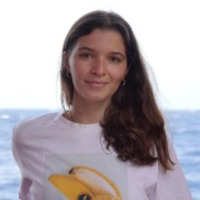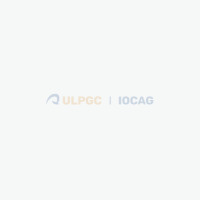GOB
Biological Oceanography

What we do
The Biological Oceanography Group (GOB) studies how Climate Change shapes pelagic ecosystems, in terms of productivity, plankton community structure, and carbon fluxes and sequestration in the dark ocean. Our work includes field studies of plankton ecology and ecophysiology, microbial oceanography and biogeochemistry, spanning from the submesoscale to the large scale in the ocean.
They also conduct experimental studies with microcosms and mesocosms to look at the effects of climate change on planktonic communities, and to evaluate nature-based solutions to remove excess carbon dioxide from the atmosphere.
The group has concentrated most of its efforts in the Canary Current and the northwestern Africa coastal upwelling regions, that surround us. In addition, they collaborate closely with other national and international groups, which allows for participation in many research cruises and field studies around the world.
GOB is particularly committed to the social dissemination of our activities in science fairs, the media, public conferences and schools.
More info: https://www.gob-iocag.ulpgc.es
Research Lines
Biological oceanography and climate change
- Physical-biological interactions in a changing ocean. Upwelling regions and island eddies. Impact of mesoscale and submesoscale processes on primary production and plankton community structure
- Physical and ecosystem controls on surface biogeochemistry, organic carbon fluxes and sequestration in the ocean interior. Dark ocean respiration
Associated projects:
Monitoring the health status of coastal waters
- Development of biological/microbial indices for environmental pollution
- Cyanobacterial blooms, marine mucilages, and associated microbial communities (phytoplankton, bacteria, and protozoa).
Associated projects:
- Investiga Las Canteras https://www.ulpgc.es/noticia/2023/03/17/ulpgc-presenta-resultados-14-tr…
- TRICHODESMIUM https://www.gob-iocag.ulpgc.es/trichodesmium
- TRICOFER https://www.gob-iocag.ulpgc.es/copia-de-trichodesmium
Impact of (multi) climate stressors on surface biogeochemistry and plankton communities
- Temperature increase, ocean acidification, aerosol deposition (dust and ashes from wildfire/biomass and volcanic eruptions).
- Experiments in microcosms and mesocosms.
Associated projects:
- OceanICU https://ocean-icu.eu/
- FONIAC https://www.gob-iocag.ulpgc.es/foniac
Ocean-based Carbon Dioxide Removal (CDRs) strategies -Negative Emission Technologies (NETs) – to remove CO2: impacts on marine ecosystems
- Artificial Upwelling (AU)
- Ocean Alkalinity Enhancement (OAE)
Associated projects:
- OceanNETS https://www.oceannets.eu/
Projects
OceanNETs
OceanNETs will investigate the feasibility and impacts of emerging ocean-based NETs through a transdisciplinary research approach. We will establish if ocean-based NETs can play a substantial and sustainable role in medium-to-long term pathways that achieve climate neutrality from the perspective of reaching the Paris Agreement goals.
The impacts of ocean-based NETs on society and the Earth system will also be determined. Analyses will account for both risks and co-benefits, as well as any feedbacks these may have on NET efficacy and feasibility.
The project will contribute to major international, national, and EU assessments of possible climate mitigation options.
Website: https://www.oceannets.eu/
OceanICU
The Ocean plays a crucial role in the global C cycle, acting as a sink and thus slowing the rate of climate change.
Ocean ICU will measure key biological processes within the biological C pump and evaluate their overall significance, transferring those that are important into models that inform the IPCC process and, in this way, contribute to resolving the observed model data mismatch of Ocean C sink estimates.
They will use the acquired fundamental knowledge around biological systems to evaluate the ability of human interventions in the ocean to alter the carbon cycle and produce management tools that allow the tension between resource extraction and C storage to be addressed.
Website: https://ocean-icu.eu/
e-IMPACT
This project aims to assess the relevance of oceanic subtropical cyclonic (C) and anticyclonic (A) mesoscale eddies in the context of the Biological Pump (i.e. the production of organic matter and its transport to the deep ocean).
To achieve this goal, we will study the linkage in the dynamics of mesoscale (O~100 km) and sub-mesoscale (O~10 km) physical processes and their biological and biogeochemical impacts, along the life history of C and A eddies (from their generation to a mature stage), in the Canary Current Corridor.
The project will combine traditional oceanographic sampling with novel instrumentation (e.g. buoys and gliders) to sample down to the sub-mesoscale.
People
Who we are
- Alumnii
- Alumnii
- Alumnii
- Alumnii
- Alumnii
- Alumnii
- Alumnii
- Alumnii
- Alumnii
- Alumnii
- Alumnii
- Alumnii
- Alumnii
- Alumnii








